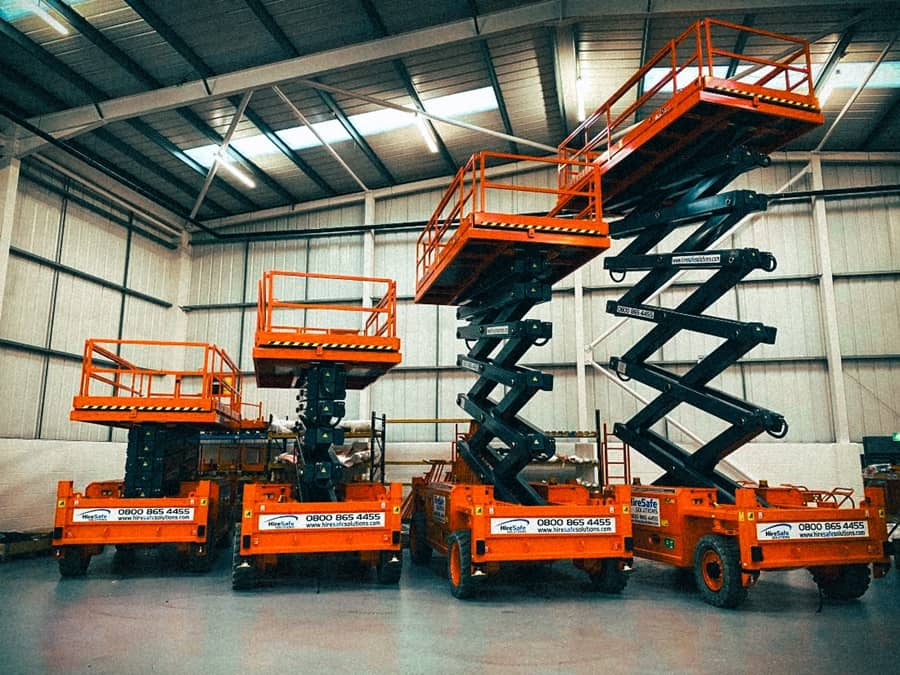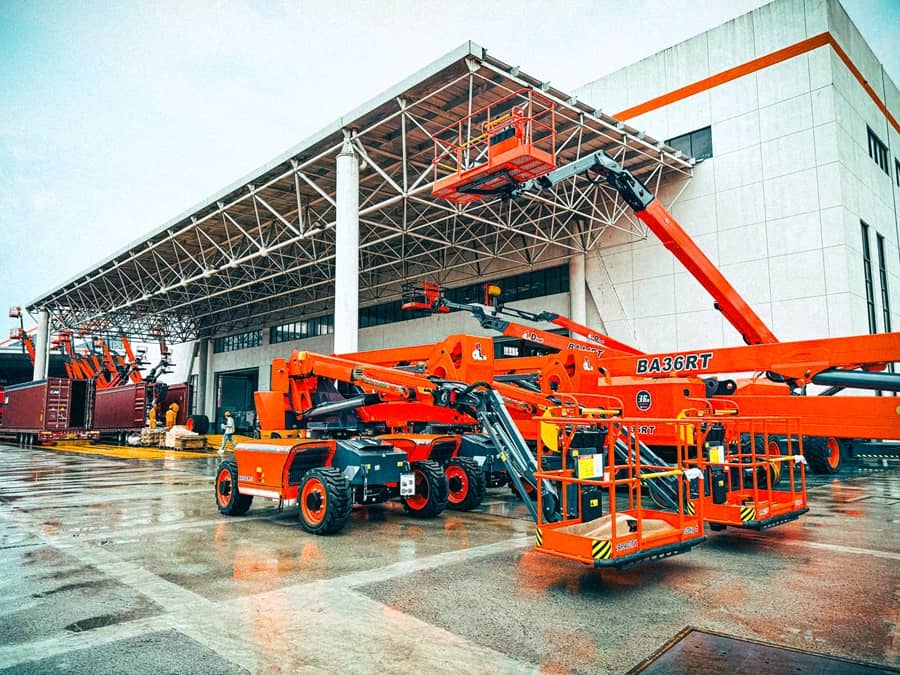Table of Contents
When it comes to aerial platforms in construction, maintenance, and various industrial applications, there are two you can’t miss: scissor lifts and boom lifts. These aerial platforms play a vital role in helping workers reach heights safely and efficiently.
However, understanding the difference between scissor lifts and boom lifts is essential to making an informed decision as to which equipment is best suited for your specific project needs.
This blog post will delve into the world of scissor lifts vs boom lifts, exploring their features, benefits, and best use cases.
What is a Scissor Lift?
A scissor lift is a vertical aerial platform with a large, flat aerial platform with a foldable support structure that extends vertically and looks like a pair of scissors from the side, hence the name. Scissor lifts can extend vertically from 10 feet to 60 feet high. They are available in electric versions and can be used indoors, making them ideal for providing vertical access so you can stack or unload inventory.

Types of scissor lifts
There are several types of scissor lifts, including:
- Electric Scissor Lifts: Powered by batteries, suitable for indoor use.
- Rough Terrain Scissor Lifts: Diesel-powered with rugged tires for outdoor use.
- Pneumatic Scissor Lifts: Powered by compressed air, used in specialized industrial settings.
- Hydraulic Scissor Lifts: Use hydraulic fluid for power, offering high lift capacities.
How Scissor Lifts Work
Scissor lifts operate using a simple yet effective mechanism:
The platform is supported by a series of linked, folding supports in a crisscross “X” pattern.
When power is applied (electric, hydraulic, or pneumatic), the folding supports begin to spread apart.
As the supports spread, they push against each other, causing the platform to rise vertically.
To lower the platform, the process is reversed, with the supports folding back together.
What Is a Boom Lift?
Boom lifts, also known as cherry pickers or man lifts, are aerial work platforms with an extendable or articulating arm (boom) that can reach up and over obstacles. They offer greater flexibility in terms of reach and positioning compared to scissor lifts.

Types of Boom Lifts
The main types of boom lifts include:
- Articulating Boom Lifts: Feature multiple joints for increased maneuverability.
- Telescopic Boom Lifts: Have a single, extendable arm for maximum horizontal reach.
- Atrium Lifts: Designed for use in confined spaces with high ceilings.
- Towable Boom Lifts: Can be towed behind a vehicle for easy transportation.
How Boom Lifts Work
Boom lifts are operated using a combination of hydraulic and mechanical systems:
A boom lift consists of a base mounted on four wheels and a boom connected to a small bucket that can be extended or retracted by hydraulic cylinders and mounted on a turntable that allows 360-degree rotation. The small bucket usually accommodates one worker. The operator uses controls on the work platform to maneuver the boom, adjusting height, reach and position. Outriggers or stabilizers are usually deployed to ensure stability during operation.
Scissor Lifts vs Boom Lifts: A Comprehensive Comparison
Whether you buy or rent a lift, your choice should be based on the type of work you will be doing, where you will be working, and your budget.

Lifting Capacity
Scissor lifts typically have lower load capacities than boom lifts, which may limit their suitability for jobs that require heavier equipment or materials. Boom lifts offer significant advantages in lifting capacity and maneuverability, making them ideal for tasks at greater heights.
Lifting Direction
Scissor lifts can only move vertically, which limits their reach and flexibility, requiring precise positioning next to the work area. This lack of horizontal reach can sometimes hinder worker productivity and restrict access to certain areas. Boom lifts offer more flexible lifting directions, with many supporting 360-degree rotation.
Platform Capacity
The advantage of a scissor lift is its ability to provide a large, stable platform that can safely accommodate multiple workers, increasing efficiency by allowing more people on the platform. However, the smaller bucket size of a boom lift limits the number of workers and the amount of tools and materials that can be carried, which may affect productivity.
Lifting Height
Telescopic lifts can lift workers to heights between 30 and 210 feet; articulated lifts can extend from 30 to 135 feet. Scissor lifts can lift workers up to 60 feet high,
Cost
Scissor lifts are less expensive than boom lifts, making them a more affordable option for many companies if they don’t have a specific need.
| Aspect | Scissor Lifts | Boom Lifts |
|---|---|---|
| Maximum Height | 10 to 60 feet | 30 to 180+ feet |
| Directional Movement | Vertical only | Vertical, horizontal, diagonal |
| Platform Capacity | 500 to 2,500 lbs | 300 to 1,000 lbs |
| Platform Size | Larger, up to 4′ x 25′ | Smaller, typically 3′ x 8′ |
| Maneuverability | Limited | Highly maneuverable |
| Stability | Very stable | Less stable at full extension |
| Indoor/Outdoor Use | Both | Primarily outdoor, some indoor |
| Setup Time | Quick and easy | Longer, may require outriggers |
| Transportation | Compact, easier | Larger, more challenging |
| Cost | Generally less expensive | Typically more expensive |
| Versatility | Best for vertical access | Wide range of access challenges |
| Energy Efficiency | More efficient | Less efficient |
Conclusion
In conclusion, the choice between a boom lift and a scissor lift depends on the specific requirements of the job at hand. Factors such as working height, maneuverability needs, load capacity, number of workers, and budget constraints should all be carefully considered when making this decision.
If you still have questions about choosing a boom lift or scissor lift, don’t worry, Holdwell has you covered. Holdwell specializes in used lifts from top brands like Genie, JLG, Haulotte, and Dingli. Trust our expertise to help you make the right purchase decision for your company. Contact us today to learn more.




